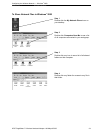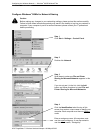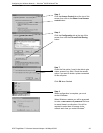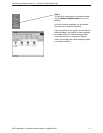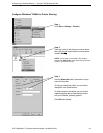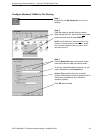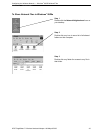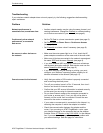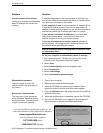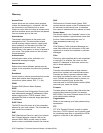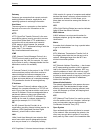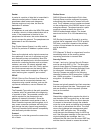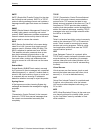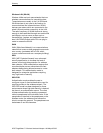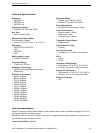
Glossary
AT&T Plug&Share™ Wireless Notebook Adapter 108 Mbps 6750G 35
Packet
A packet is a portion of data that is transmitted in
network communications. Packets are also
sometimes called frames and datagrams.
Packets contain not only data, but also the
destination IP address.
Passphrase
A Passphrase is used within the WPA-PSK mode
to enable a client to initiate authentication with a
router. If the passphrase is identical to the
passphrase on the router, the router allows the
client to access the network. The passphrase can
be between 8 and 63 characters.
Ping
Ping (Packet Internet Groper) is a utility used to
find out if a particular IP address is present online.
Port
Ports are the physical and/or logical communica-
tions pathways in and out of computers and net-
work devices (routers and switches). Most PCs
have serial and parallel ports, which are external
sockets for connecting devices such as printers,
modems, and mice. All network adapters also
use ports to connect to the LAN. Finally, applica-
tions that communicate over the Internet also
have ports; these are the endpoints of the appli-
cation and are given a specific "port number."
PPPoE
PPPoE (Point-to-Point Protocol Over Ethernet) is
a protocol used to communicate between two
computers using a serial interface, such as dial-
up Internet connections, over an Ethernet link.
Preamble
The Preamble Type refers to the radio preamble,
or header, which is transmitted at the beginning
of a packet of data. The preamble contains infor-
mation required for the access point and
adapters to transmit information. Since the
Preamble is attached to each packet of data, a
Short Preamble improves data throughput, but it
may cause connection problems with early wire-
less devices that only support long preambles.
The Long Preamble option ensures compatibility
with these early wireless devices.
Protocol
A protocol is a rule that governs the communica-
tion of data.
Radius Server
RADIUS (Remote Authentication Dial-in User
Service) Server must be configured to properly
authenticate client devices for access to the net-
work. The IP address and port number are based
on the configuration of the RADIUS server in your
enterprise network. The shared secret is a pass-
word that is used to identify the client in a
RADIUS authenticated network. The shared
secret can be from 22 to 128 characters long.
RIP
RIP (Routing Information Protocol) is a routing
protocol that is integrated in the TCP/IP protocol.
RIP finds a route that is based on the smallest
number of hops between the source of a packet
and its destination.
RTS
RTS (Request To Send) is a signal sent from the
transmitting station to the receiving station
requesting permission to transmit data.
Security Phrase
At least 1 and up to 4 unique Security Phrases
must be set when WEP is "On." The encryption
types for these Security Phrases may be either
Hexadecimal (HEX) or American Standard Code
for Information. Interchange (ASCII). ASCII
Security Phrases are subject to the following
character limitations: 64 Bit encryption: 5 charac-
ters; 128 Bit encryption: 13 characters; 152 Bit
encryption: 16 characters.
Server
Servers are typically powerful and fast computers
that store programs and data. The programs and
data are shared by client computers (worksta-
tions) on the network.
Shared Key
Shared Key authentication requires the client to
use the same WEP encryption key as that used
by the wireless router. When the client attempts
to connect to the network through the wireless
router the router sends a challenge text message
to the client to authenticate the client. The client
returns the challenge text message encrypted
using the WEP encryption key. The wireless
router decrypts the message using it's WEP key
and if the decrypted message is the same as the
original challenge text message, then it is
assumed that the client has the correct WEP key
and the client is allowed to access the network.



